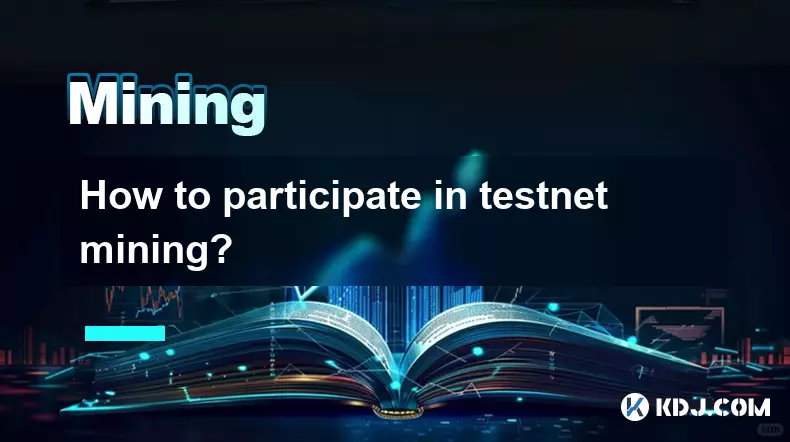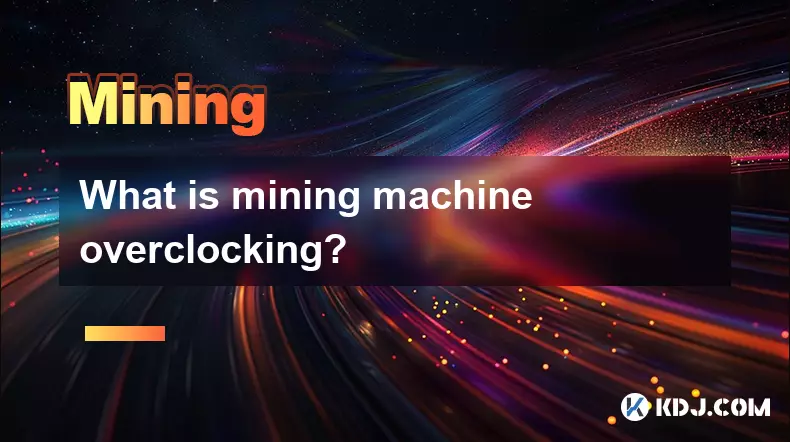-
 bitcoin
bitcoin $109667.069529 USD
-3.03% -
 ethereum
ethereum $3936.685804 USD
-4.07% -
 tether
tether $1.000493 USD
0.01% -
 xrp
xrp $2.771823 USD
-4.74% -
 bnb
bnb $957.805027 USD
-5.34% -
 solana
solana $196.735100 USD
-6.68% -
 usd-coin
usd-coin $0.999727 USD
-0.01% -
 dogecoin
dogecoin $0.227355 USD
-5.12% -
 tron
tron $0.335205 USD
-0.81% -
 cardano
cardano $0.779256 USD
-3.59% -
 ethena-usde
ethena-usde $0.999900 USD
-0.06% -
 hyperliquid
hyperliquid $42.492095 USD
-6.61% -
 chainlink
chainlink $20.501853 USD
-4.34% -
 avalanche
avalanche $28.952606 USD
-11.21% -
 stellar
stellar $0.356038 USD
-3.93%
How to identify high-quality mining pools?
A mining pool’s reputation, transparent operations, and strong technical infrastructure are key to maximizing profitability and minimizing risks for miners.
Sep 21, 2025 at 03:19 pm

Reputation and Track Record
1. A mining pool’s reputation is built over time through consistent performance and transparency. Pools that have operated for several years without major incidents are generally more trustworthy.
2. Look for user reviews on forums like Bitcointalk, Reddit, or specialized crypto communities. Real user experiences can highlight issues not evident from official announcements.
3. Check if the pool has experienced any security breaches or payout delays in the past. Frequent outages or unresolved disputes with miners indicate poor management.
4. Established pools often publish regular reports on hash rate distribution, uptime, and maintenance schedules, showing accountability to their users.
A reliable track record significantly reduces the risk of joining a fraudulent or inefficient mining operation.Fees and Payout Structure
1. Mining pools charge a fee, typically between 1% and 3%, deducted from block rewards. Compare these rates across multiple platforms but don’t prioritize low fees over stability.
2. Some pools use a Pay-Per-Share (PPS) model, offering steady income by paying for each valid share submitted, regardless of block discovery. This reduces variance but may come with higher fees.
3. Others use Proportional or Pay-Per-Last-N-Shares (PPLNS) models, where earnings depend on recent contribution before a block is found. These favor consistent miners but introduce income fluctuation.
4. Be cautious of pools advertising “zero fees” — they might compensate through hidden mechanisms or reduced payouts during high network congestion.
Understanding how a pool calculates and distributes rewards helps avoid unexpected losses in profitability.Technical Infrastructure and Security
1. High-quality pools maintain robust server infrastructure with low latency and minimal downtime. Frequent disconnects reduce your effective hash rate and potential earnings.
2. The pool should support modern mining protocols like Stratum V2, which enhances efficiency and security by reducing bandwidth usage and preventing certain types of attacks.
3. Two-factor authentication (2FA), IP whitelisting, and secure API access are essential features that protect miner accounts from unauthorized access.
4. Open-source software or public audit logs demonstrate technical transparency, allowing experts to verify fairness in share calculation and reward distribution.
Superior technical design ensures optimal performance and safeguards against exploitation.Transparency and Community Engagement
1. Top-tier pools provide real-time dashboards displaying total network hash rate, active miners, recent blocks mined, and estimated next block probability.
2. They maintain active communication channels such as Discord, Telegram, or email support to address technical issues promptly.
3. Regular updates about protocol changes, fork preparedness, or emergency maintenance show proactive management and respect for miner involvement.
4. Pools contributing to open-source development or participating in consensus discussions exhibit long-term commitment to the ecosystem.
Transparent operations foster trust and enable informed decision-making for miners at all levels.Common Questions
What is the difference between solo mining and pool mining?Pool mining combines computational power from multiple miners to increase the chances of finding a block, distributing rewards proportionally. Solo mining relies solely on one miner’s hash rate, offering full reward upon success but with extremely low probability for individuals.
How do I verify if a mining pool pays accurately?Monitor your submitted shares and compare them with recorded payouts over time. Use third-party tools or browser extensions that analyze pool statistics and detect discrepancies in reported vs. actual rewards.
Can a mining pool steal my cryptocurrency?A legitimate pool cannot access your private keys or wallet funds. However, poorly secured pools could expose your mining revenue or allow attackers to redirect payouts if account credentials are compromised.
Does the location of a mining pool's servers matter?Yes. Closer geographic proximity reduces connection latency, ensuring faster submission of work and minimizing rejected shares due to timeouts or network delays.
Disclaimer:info@kdj.com
The information provided is not trading advice. kdj.com does not assume any responsibility for any investments made based on the information provided in this article. Cryptocurrencies are highly volatile and it is highly recommended that you invest with caution after thorough research!
If you believe that the content used on this website infringes your copyright, please contact us immediately (info@kdj.com) and we will delete it promptly.
- Hashdex, Crypto ETFs, XRP & Solana: A New Era for Digital Asset Investing
- 2025-09-26 18:25:12
- Crypto Market Slowdown? Year-End Rally Still in Play!
- 2025-09-26 18:25:12
- XRP, RLUSD, and the Derivatives Market: A New York Minute on Crypto's Next Big Thing
- 2025-09-26 18:45:15
- Bitcoin Price Under Pressure: Is $105,000 Still in Play?
- 2025-09-26 19:05:14
- Pepeto's Presale Surge: Riding the PEPE Success Wave?
- 2025-09-26 19:05:14
- Pepeto vs. Shiba Inu vs. PEPE: The Next Meme Coin Millionaire Maker?
- 2025-09-26 19:10:01
Related knowledge

The difference between staking and mining
Sep 24,2025 at 05:18am
Understanding Staking in the Cryptocurrency Ecosystem1. Staking involves holding funds in a cryptocurrency wallet to support the operations of a block...

How to participate in testnet mining?
Sep 22,2025 at 09:18am
Understanding Testnet Mining in the Crypto Ecosystem1. Testnet mining is a method used by blockchain developers to simulate real-world conditions on a...

How to dispose of abandoned mining machines?
Sep 19,2025 at 08:19pm
Assessing the Condition of Abandoned Mining Rigs1. Begin by inspecting each mining machine for visible damage, corrosion, or missing components. Machi...

How to identify high-quality mining pools?
Sep 21,2025 at 03:19pm
Reputation and Track Record1. A mining pool’s reputation is built over time through consistent performance and transparency. Pools that have operated ...

Advantages of decentralized mining pools
Sep 20,2025 at 04:36pm
Enhanced Security and Resistance to Censorship1. Decentralized mining pools operate on blockchain-based smart contracts, eliminating the need for a ce...

What is mining machine overclocking?
Sep 21,2025 at 07:19pm
Understanding Mining Machine Overclocking1. Mining machine overclocking refers to the process of increasing the operating frequency of a cryptocurrenc...

The difference between staking and mining
Sep 24,2025 at 05:18am
Understanding Staking in the Cryptocurrency Ecosystem1. Staking involves holding funds in a cryptocurrency wallet to support the operations of a block...

How to participate in testnet mining?
Sep 22,2025 at 09:18am
Understanding Testnet Mining in the Crypto Ecosystem1. Testnet mining is a method used by blockchain developers to simulate real-world conditions on a...

How to dispose of abandoned mining machines?
Sep 19,2025 at 08:19pm
Assessing the Condition of Abandoned Mining Rigs1. Begin by inspecting each mining machine for visible damage, corrosion, or missing components. Machi...

How to identify high-quality mining pools?
Sep 21,2025 at 03:19pm
Reputation and Track Record1. A mining pool’s reputation is built over time through consistent performance and transparency. Pools that have operated ...

Advantages of decentralized mining pools
Sep 20,2025 at 04:36pm
Enhanced Security and Resistance to Censorship1. Decentralized mining pools operate on blockchain-based smart contracts, eliminating the need for a ce...

What is mining machine overclocking?
Sep 21,2025 at 07:19pm
Understanding Mining Machine Overclocking1. Mining machine overclocking refers to the process of increasing the operating frequency of a cryptocurrenc...
See all articles










































































